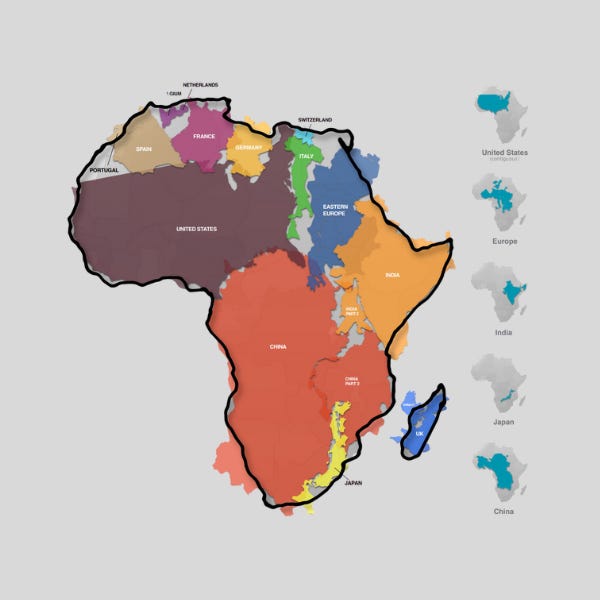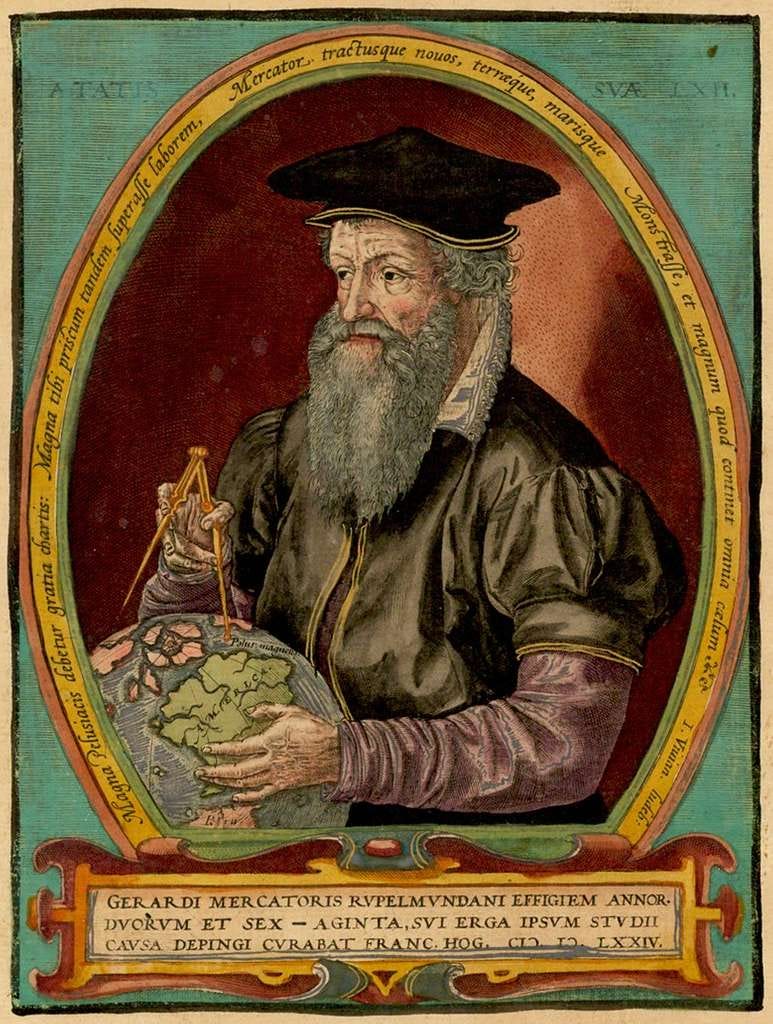THE TRUE SIZE OF AFRICA
Correcting the misconception of Africa's true dimensions
Hello my friends, I trust you are all well!
Thank you to all the new subscribers of ALKEBULAN and especially paid premium members to the publication. Your contribution and support is appreciated. Remember you can now get free access to the premium tier by recommending the newsletter to your friends and family. The more people that sign up the more free months of access you receive. Visit the post at the end of this article to find out how you can help grow this community.
Today we’re going to look at a topic that most people never think about because what we’ve been told has been so widely accepted.
We’re going to talk about the true size of Africa.
Don’t Always Believe What You See
Africa, is allegedly the second-largest continent on Earth and it’s been the subject of fascination, exploration, and misunderstanding for centuries. Its vast landscapes, diverse cultures, and rich history have captured the imagination of many and has made it the constant target for exploitation. Some will say, ‘who cares what the size of Africa truly is?’ but I argue that the representation of the continent ties into the perception the world has of us as a people; undervalued and misrepresented as inferior regardless of the truth. When you realise the insane size of Africa in relation tot he rest of the world and how it should actually look on the map, you will be absolutely astonished.
The Fallacy Of The Cartographer
When it comes to representing the world, maps have been the primary method of representing our planet. However, we’re too quick to trust what we see. The map that most of us use ulilises The Mercator projection and is named after a man called Gerardus Mercator who created it in 1569. This is what you will see in most classrooms and textbooks. However this map distorts the size of continents near the poles, making them appear larger than they are. In addition, continents near or on the equator were more difficult to represent and that led to a significant underestimation of Africa's true size. What is interesting is that despite the modern knowledge of how these factors misrepresent Africa in relation to the rest of the world, nothing has been done to correct it in the education system. This misrepresentation, which has to now be acknowledged as wilful, continues to shape perceptions of Africa.
It’s All In The Numbers
In bygone years we didn’t have the technology or knowledge to know exactly what the dimensions of the continents actually were. Now we do and here are the facts; Africa spans over 30 million square kilometers (11.7 million square miles). This makes it larger than the United States, China, India, and most of Europe combined! Yes, all the other continents except South America can fit inside Africa comfortably. Now think about that the next time you look at how Africa is presented on maps. Africa is home to 54 countries, over 1.3 billion people, and more than 1,250 languages. Its coastline stretches over 26,000 miles, and its diverse geography includes deserts, mountains, rainforests, and savannas. Africa is not part of the known world. It is a world within a world.
A New Perspective
Those numbers may be opaque to some of you, so allow me to give you comparisons that will make it easier to conceptualise Africa’s true magnitude:
Africa is nearly twice the size of the United States.
You could fit the entire European Union inside Africa and still have room to spare.
Even the vast expanse of China fits comfortably within Africa's borders.
Africa's landmass is only comparable to South America, however its cultural and geographical diversity is unparalleled.
The Impact of Misrepresentation
Remember when I said the erroneous representation of Africa’s size has real-world implications? Think about it, humans are beings of emotion and perception. The way we see something, such as size of a continent, affects how businesses, governments, and individuals perceive opportunities and challenges on that continent. Understanding the true size of Africa can lead to more informed decisions and a more nuanced appreciation of its potential.
An Image Of Greatness
Modern technology already allows for a more accurate representation of Africa. Interactive maps, 3D models, and satellite imagery can correct the misconceptions and provide a more realistic view of the continent's vastness. The portrayal of Africa in literature, movies, and media has often been stereotypical and one-dimensional and if people open a map and see a continent so grand that it dominates the entire image, it would inspire a greater reverence for how incredible a landmass ALKEBULAN is.
Invite your friends to ALKEBULAN
Thank you for reading ALKEBULAN — your support allows me to keep doing this work. I truly appreciate you! If you enjoy ALKEBULAN, it would mean the world to me if you invited friends to subscribe and read with us. If you refer friends, you will receive benefits that give you special access to ALKEBULAN.






THIS YOU WILL NEVER LEARN IN SCHOOL
° Area of Africa = 30.37 million km2
° Area of China = 9.6 million km2
° US area = 9.8 million km2
° Area of Europe = 10.18 million km2
● Africa is bigger than all of Europe, China and the United States of America combined.
● But on most world maps, Africa is represented in a small size.
This is done deliberately to create the visual effect of a small Africa to manipulate, brainwash and deceive Africans wherever they are.
- Africa has 60% of arable land;
- Africa has 90% of the raw material reserve;
- Africa has 40% of the global gold reserve;
- Africa, 33% of the diamond reserve;
-Africa has 80% of the global reserve of Coltan (mineral for the production of telephones and electronics), mainly in the Democratic Republic of Congo.
-Africa owns 60% of the global reserve of cobalt (mineral for the manufacture of automotive batteries)
-Africa is rich in oil and natural gases.
-Africa (Namibia) has the most fish-rich coastline in the world.
- Africa is rich in manganese, iron and wood.
- Africa is three times the area of China, three times the area of Europe, three times the area of the United States of America.
- Africa has thirty and a half million km² (30 415 875 km²);
- Africa has 1.3 billion inhabitants (China has 1.4 billion inhabitants in 9.6 million km²).
Which means that Africa is unprotected.
- The arable land in the Democratic Republic of Congo is capable of feeding all of Africa.
“And all of Africa's arable land is a cable to feed the entire world.
-The Democratic Republic of Congo has important rivers that can light up Africa.
The problem is that the CIA, Western companies and some African puppets have destabilized the DRC for decades.
- Africa is a culturally diverse continent in terms of dance, music, architecture, sculpture, etc.
- Africa accommodates 30,000 recipes for medicines and herbs that the West modifies in its laboratories.
- Africa has a young global population that is expected to reach 2.5 billion by the year 2050.
● AFRICA REPRESENTS THE FUTURE OF HUMANITY from Africa
Nice